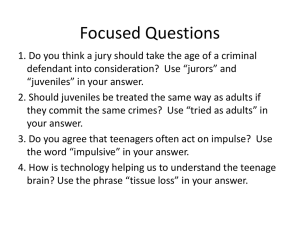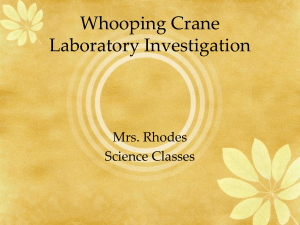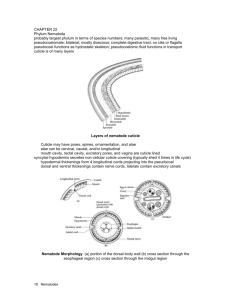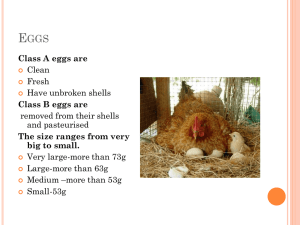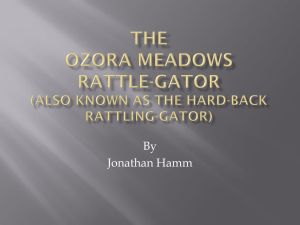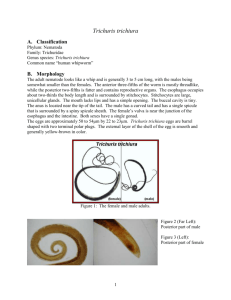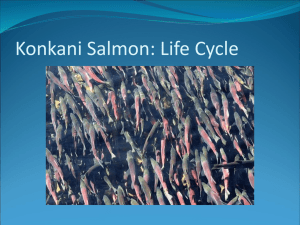Quiz 1 - Matthew Bolek
advertisement
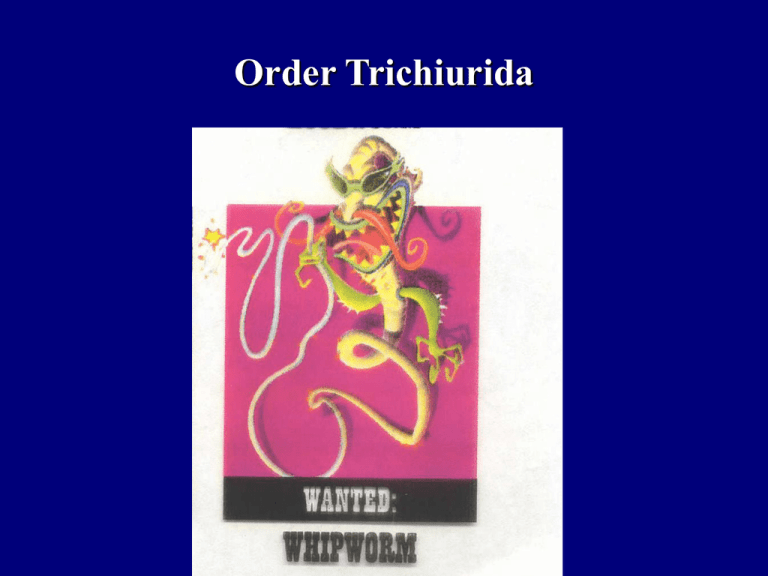
Order Trichiurida Order Trichiurida • Trichuris trichiura – Whipworm • Trichinella spiralis Trichuris trichiura • 30-50 mm • Long esophagus surrounded by stichocytes (glands) – Stichosome • Single gonad • Males have single spicule • Eggs have characteristic shape 50-54 X 22-23 μm • Direct Life Cycle • Adults live in cecum and ascending colon • Release eggs with feces • Eggs embryonate in soil (21 days) • Eggs ingested • Hatch • Juveniles enter crypts of Lieberkühn Crypts of Lieberkühn Tubular glands at base of villi • Juveniles enter crypts of Lieberkühn (large intestine) • Penetrate cells • As they grow, tunnel in epithelium. Posterior end enters lumen • Mating • Egg production Symptoms and Pathology • Most symptom-less • > 100 worms – Heavy infections common (200 to over 1000 worms) • • • • • Dysentery Anemia Growth retardation Finger clubbing Reduce cognitive function in children Trichuris trichiura • Worms cause loss of muscle tone in wall of rectum and it everts out the anus; whipworms are often seen attached to the rectal tissue Trichuris trichiura • Rectal prolapse Symptoms and Pathology • Anterior end buried in mucosa – Physical damage – Fibrosis – Chronic hemorrhage anemia Diagnosis • • • • • Look for eggs in feces Adult worms Frank blood in feces Treatment difficult Mebendazole Epidemiology • Cosmopolitan • Prevalence – SE U.S. 20-25% in children – U.S. 1.2% • 902 million infected worldwide Prolific • Females produce 3,000-20,000 eggs per day • Sensitive to environmental conditions – – – – High rainfall Moisture retaining soil Shade Warm climate Epidemiology • Ingest Eggs with Juveniles! – Very similar to Ascaris epidemiology Trichinella spiralis • Males 1.5 mm, Females 3 mm • Short esophagus • Stichosome • Psuedobursa • No copulatory spicule • Single gonad • Uterus contains fully developed eggs Trichinella spiralis • Parasites of carnivorous mammals • Causes Trichinosis • Unusual life cycle – Same individual host is both definitive and intermediate host – Adults in small intestine – Juveniles inside muscle cells • Largest intracellular parasite • Def. host is infected by ingesting juveniles in the muscle of other hosts • Juveniles enter intestinal mucosa • 4 molts • Growth • Copulation • Within 32 hours after ingestion Adults in small intestine • Thread throughout intestinal cells • Females release juveniles into mucosa • Thousands over 416 weeks • Juveniles enter hepatoportal system • Carried to liver, heart, lungs, then arterial system • Distributed throughout body • Penetrate cells of skeletal muscle • Grow to about 1 mm • Infective in 4-6 weeks • How do the juveniles fit inside a muscle cell? • How do juveniles survive inside a muscle cell? Nurse Cell • Juveniles take over cell – Redirect cell activities to their survival • Alter gene expression – From a contractile fiber – To a cell that nourishes the worm • Cell becomes encapsulated with collagen • Blood vessels form around the cell • Juveniles arrest development • Live for months-years and up to 39 years • Die from calcification Which muscles? • Commonly – – – – – – Eye Tongue Masticatory Diaphragm Intercostals Heavy muscles of arms and legs Diagnosis and Treatment • • • • Most cases go undetected Difficult to diagnose Symptoms are vague Difficult to find juveniles in tissue – Muscle biopsy – But too late • No treatment to kill parasites – Shielded from drugs • Treat symptoms Epidemiology • Cosmopolitan – Circumboreal (northern areas of North America and Eurasia) – Less common in tropical areas • Common in U.S. – 1940-1950 high prevalence – Decreased until 1980 – Asian immigrants consuming raw pork • Transmission cycles – Domestic – Sylvatic Domestic Cycle PIG Nip tails RAT RAT PIG Cannibalism Scavenging Scavenging, Eating human garbage DEAD END Eat undercooked pork Humans Feed garbage to pigs Raise pigs Create rat habitat Keep infection cycle going Eats rats Sylvatic Cycle Sylvatic Cycle • Humans less commonly involved • Hunting and eating wild game Control and Prevention • Cook meat thoroughly – Pork – Wild game • Raw sausage is delicacy – Mixture of different animals • Freeze meat – -15 C Has trichinosis caused us to modify our behavior? • Cook pork thoroughly • Pork uncommon in fast food restaurants Order Oxyurida • Enterobius vermicularis – Pinworms – Enterobiasis • • • • • • Large esophageal bulb Sharp, pointed tail Alae at anterior end Cosmopolitan Common in people Relatively unpathological • Direct life cycle • Adults live in ileocecal region of intestine (wander throughout gut) • Feed on bacteria and organic material from cells • At night, females migrate to anus and lay eggs (up to 16,000 each) • Embryonates within 6 hours • Infection via ingestion of embryonated eggs • Or may hatch on perianal folds and wander up intestine Symptoms and Pathology • 1/3 asymptomatic • Pruritus • Lesions from feeding not significant – Secondary infections can occur • Itching can lead to secondary infections Pinworm Neurosis • Nervousness – Fidgeting, restlessness, irritable, nail biting, nose picking – Due to toxemia and damage of epithelium • Children • Parents – Obsessive cleaning Diagnosis • Scotch tape test • Flashlight test • Mebendazole • Treat entire family Diagnosis of Enterobius vermicularis DIAGNOSIS - Use of double-stick tape on a tongue depresser. This is pressed against the perianal folds where eggs will stick to the tape. Tape is then stuck onto a microscope slide and examined for eggs. Enterobius vermicularis Almost anybody can become infected with this parasite. No social class is exempt. These parasites soon become "family affairs". Once one person, usually a child becomes infected, other family members will undoubtedly also become infected. Epidemiology • Very Prolific • Eggs build up fast – Clothing and bedding – Eggs very light and float – Easily distributed • Eggs viable for up to a week Prevention and Control • Not very serious • Good hygiene

